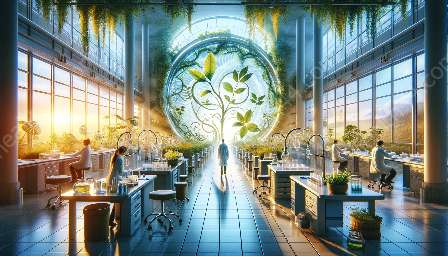Outdoor lighting is a crucial aspect of any landscaping design, not only for its practicality but also for its ability to enhance the visual appeal of architectural features and landscaping elements. In this comprehensive guide, we will explore the various ways in which outdoor lighting can be utilized to highlight architectural details and complement landscaping, creating an inviting and aesthetically pleasing outdoor environment.
Understanding the Importance of Outdoor Lighting
Outdoor lighting serves both functional and aesthetic purposes. By illuminating pathways, entrances, and outdoor living spaces, it ensures safety and security while also creating a welcoming ambiance. When strategically designed, outdoor lighting can draw attention to specific architectural elements and enhance the overall visual appeal of a property's exterior.
Types of Architectural Features
Before delving into the specifics of outdoor lighting, it is important to understand the different architectural features that can be highlighted. These may include exterior walls, columns, arches, windows, doorways, and decorative elements such as moldings and trims. Each of these features presents an opportunity to create visual interest and depth through appropriate lighting techniques.
Enhancing Landscaping with Outdoor Lighting
Strategically placed outdoor lighting can also enhance the natural beauty of landscaping. It can accentuate trees, shrubs, flower beds, and other elements, allowing their textures and colors to be admired even after dark. Furthermore, outdoor lighting can create a sense of depth and dimension within the landscape, adding an extra layer of visual appeal to the overall outdoor environment.
Guidelines for Highlighting Architectural Features
- Accent Lighting: Positioning lights to direct attention to specific architectural elements, such as a façade or a unique feature like a decorative trim or relief sculpture.
- Shadowing: Casting light to create shadows that emphasize the texture and depth of a surface, enhancing the appearance of a wall, column, or other architectural feature.
- Wall Washing: Using wide-angle lighting to uniformly illuminate an entire surface, highlighting the texture and color of walls and creating a subtle, inviting glow.
- Uplighting: Placing lights at the base of architectural features, such as columns or trees, to accentuate their verticality and create a striking visual effect.
- Downlighting: Mounting lights in elevated positions to cast a broad, downward pool of light, which can create drama by highlighting specific architectural details from above.
Integrating Lighting with Landscaping
When integrating outdoor lighting with landscaping, it is essential to consider the overall design and layout of the outdoor space. In-ground fixtures can be discreetly placed within garden beds, while path lights can guide visitors and highlight the edges of walkways. Additionally, lighting along the perimeter can frame the landscaping, effectively extending the visual impact of the property beyond daylight hours.
Utilizing Energy-efficient Technology
Advancements in lighting technology have made energy-efficient outdoor lighting solutions more accessible than ever. LED lighting, in particular, offers long-lasting performance, low energy consumption, and a range of color temperatures to suit the desired ambiance. By leveraging these technologies, property owners can create visually stunning outdoor environments while minimizing energy costs and environmental impact.
Maintaining Outdoor Lighting Systems
Regular maintenance is essential for ensuring the longevity and effectiveness of outdoor lighting systems. This includes cleaning fixtures, replacing bulbs as needed, and adjusting the positioning of lights to accommodate changes in landscaping growth. By staying proactive with maintenance, property owners can preserve the visual impact of their outdoor lighting design over time.
Final Thoughts
Outdoor lighting has the power to transform a property, accentuating its architectural features and enhancing the natural beauty of its landscaping. By carefully planning and implementing outdoor lighting solutions, property owners can create an inviting and visually stunning outdoor environment that can be enjoyed day and night.

















